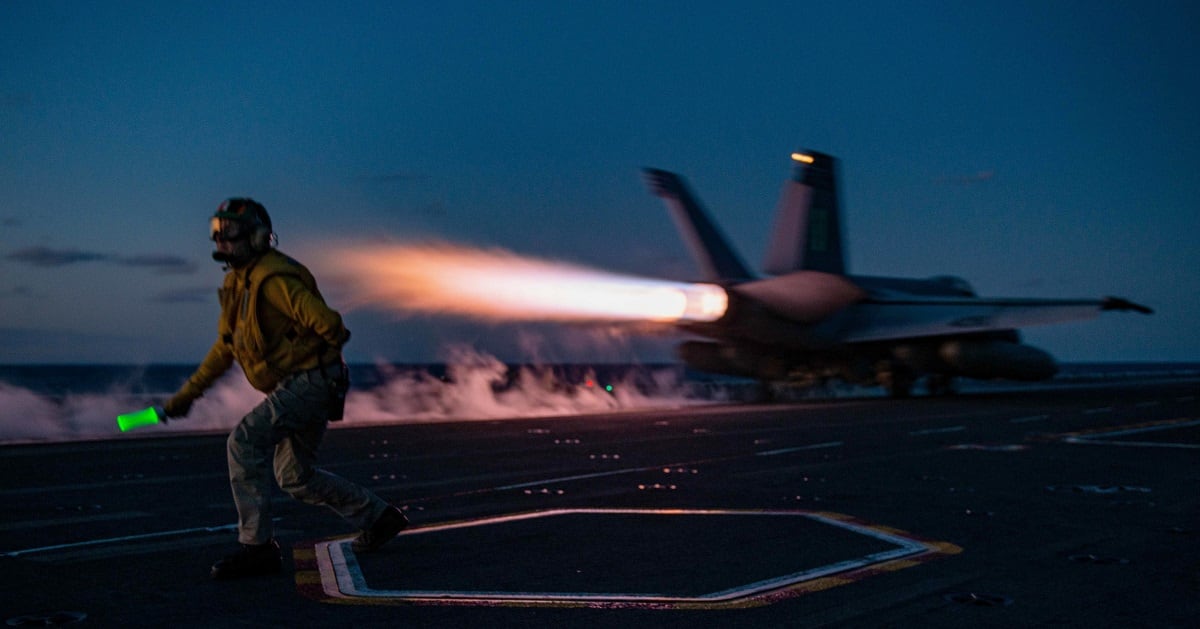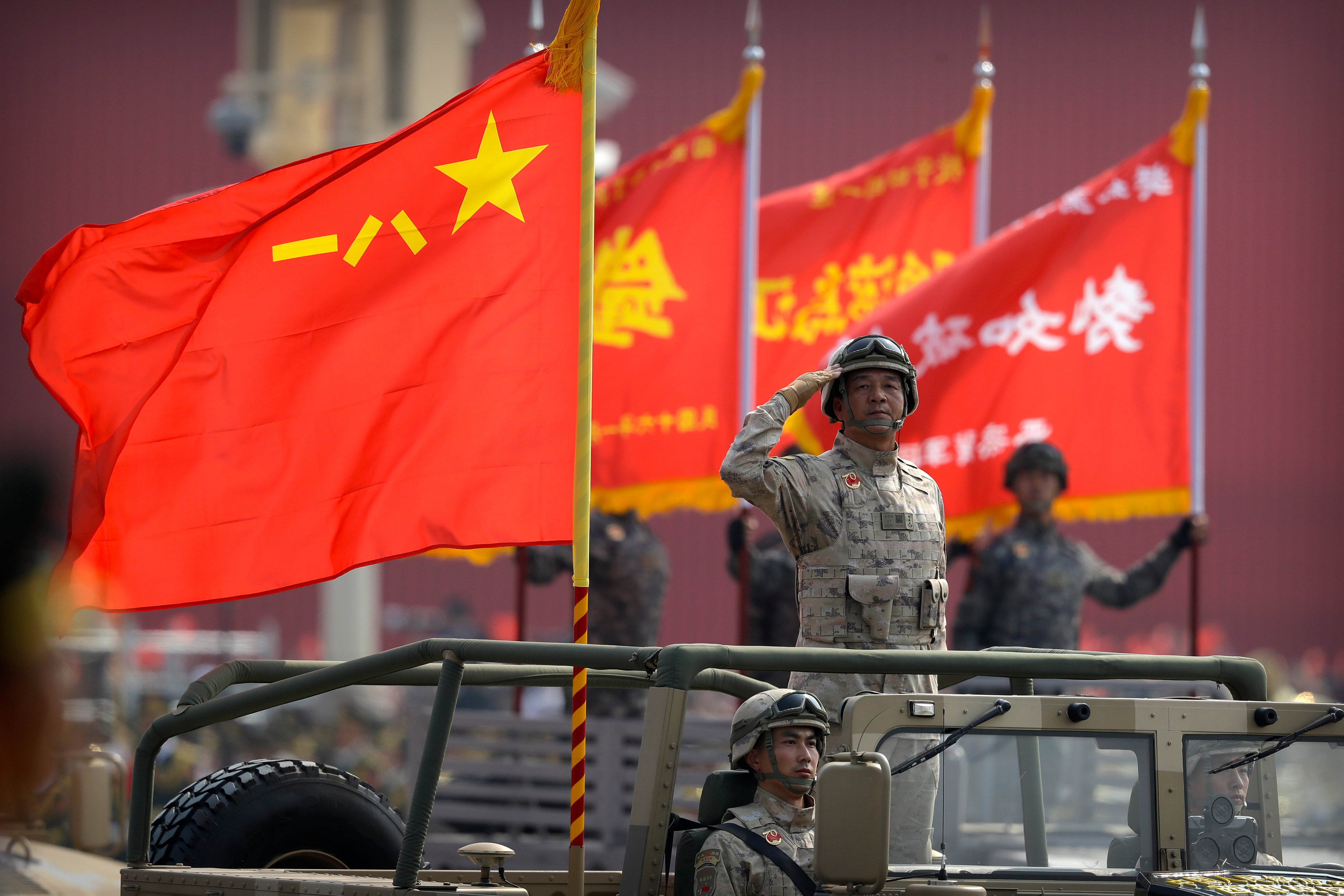A new report from the Pentagon details China’s more provocative and aggressive actions toward Taiwan, but Defense Department officials say those actions do not mean an invasion will happen soon.
The annual China Military Power Report sent to Congress this week noted that the country’s military overhaul is continuing apace, including the modernization of its capabilities and the expansion of its nuclear arsenal. It comes amid heightened tension between China and Taiwan, and as President Joe Biden is expected to meet with Chinese President Xi Jinping in the coming months.
“I don’t see any kind of imminent indications of an invasion,” a senior defense official told reporters Monday. “We’re definitely very focused on this level of more intimidating and coercive behavior, and watching closely to see how things unfold.”
The report reiterates that China is the only country with the will and the military capacity, while still getting up to speed, to challenge what it describes as the U.S.-led “world order.”
The country has set 2049 as its goal for achieving a “world-class” military that could presumably rival U.S. capabilities, to be achieved through weapons modernization, expanded military basing and advanced warfare capabilities, to include information operations.
China is also getting into the multidomain game, according to the report, dubbing their “new core operational concept” with the eerily familiar “MultiDomain Precision Warfare.”
Like the U.S. doctrine, this approach involves advanced networking capabilities. Specifically, it “incorporates advances in big data and artificial intelligence to rapidly identify key vulnerabilities in the U.S. operational system and then combine joint forces across domains to launch precision strikes against those vulnerabilities,” the report reads.
Much of the focus on modernization is aimed at Taiwan.
Taiwan is squarely in China’s crosshairs, with an increase in 2021 of activity in the Taiwan strait, “to include increased flights into Taiwan’s self-declared Air Defense Identification Zone (ADIZ) and conducting island seizure exercises,” the report found.
China’s goal of modernization by 2027, to include “mechanization, informatization and intelligentization,” would make its military “more credible” in its efforts to bring Taiwan under its control.
Beyond Taiwan, China is also likely looking into developing more overseas bases, beyond its current hub in Djibouti.
“The PRC has likely considered Cambodia, Myanmar, Thailand, Singapore, Indonesia, Pakistan, Sri Lanka, United Arab Emirates, Kenya, Equatorial Guinea, Seychelles, Tanzania, Angola, and Tajikistan, among other places, as locations for PLA military logistics facilities,” according to the report.
Nuclear weapons and beyond
China is continuing its accelerated nuclear expansion and has an estimated stockpile of more than 400 nuclear warheads ― which still number fewer than America’s 3,750 nuclear weapons. At this pace, the third-largest nuclear armed power is likely to field a stockpile of 1,500 warheads by 2035, its target for “basically complete modernization” of its defense forces, the report said.
The country had kept its nuclear arsenal in the low hundreds for years, but last year’s report said it was on track to have at least 1,000 by 2030, essentially tripling its arsenal within a decade. It’s also building a land-sea-air triad of delivery vehicles similar to those of the U.S. and Russia ― including the H-6N air-to-air refuelable bomber, which it unveiled in 2019.
RELATED

The U.S. acknowledged this month that China has fielding a new, intercontinental ballistic missile on six of its nuclear-powered submarines, meant to threaten the continental U.S. The senior defense official said Monday that China’s Jin-class submarines are on patrol with the JL-3 missiles, which let them hit the U.S. without traveling as far from protected Chinese coasts.
Pentagon officials said that the overall ramp-up, as Beijing resists U.S. efforts to draw it into arms control talks, suggests China may be moving away from its stated aim of having just enough nuclear weapons to maintain its national security.
“They’re going from what was often characterized as a minimum set of deterrence capabilities to one that’s much more sophisticated in scope and also larger in size. So they’re now kind of getting into the range of the middle nuclear powers here,” the official said.
The Biden administration is moving ahead with plans for a new bomber, the B-21 Raider, due to be unveiled next week.
It will be accompanied by the LGM-35A Sentinel, also known as the Ground Based Strategic Deterrent, which will replace Washington’s aging Minuteman III intercontinental ballistic missiles. The Columbia-class ballistic missile submarine is due to come online by the end of the 2020s.
The administration’s defense strategy, released in October, voices concern that the U.S. will, for the first time, face “two major nuclear powers as strategic competitors and potential adversaries,” which will “create new stresses on stability and new challenges for deterrence, assurance, arms control, and risk reduction.”
RELATED

Last year, China added three new ICBM silo fields for a total of at least 300 new silos, the new report said. China’s launch of roughly 135 ballistic missiles for testing and training last year, “was more than the rest of the world combined, excluding ballistic missile employment in conflict zones,” the report said.
The report also flags Beijing’s test of a new hypersonic weapon system in 2021, “building on previous progress in hypersonic weapon development.” Pentagon officials have acknowledged China’s test in July 2021 of a hypersonic glide vehicle and fractional orbital bombardment system ― which achieved the greatest distance flown, 40,000 kilometers, and longest flight time of any Chinese test.
As with last year’s report, the Pentagon acknowledged China’s fielding in 2020 of the DF-17 medium-range ballistic missile, equipped with a hypersonic glide vehicle designed to evade American missile defenses. Citing open source reporting, the report said the weapon appears designed to “strike foreign military bases and fleets in the Western Pacific.”
For military modernization and attaining more credible military tools to annex Taiwan, China has set 2027, 2035 and 2049 as its milestone years. To that end, its air force is rapidly catching up with the west, with more realistic training and exercises but also air-to-air missiles and other air defenses, the defense official said.
In a sign of China’s strides in domestic production, its J-10 and J-20 fighters are set to switch to Chinese-made WS-10 engines by the end of 2021. The report forecasts that China’s first domestically produced high-bypass turbofan, the WS-20, will “probably” replace Russian engines by the end of 2022 after entering flight tests for its heavy transport aircraft.
Meghann Myers is the Pentagon bureau chief at Military Times. She covers operations, policy, personnel, leadership and other issues affecting service members.
Joe Gould was the senior Pentagon reporter for Defense News, covering the intersection of national security policy, politics and the defense industry. He had previously served as Congress reporter.





